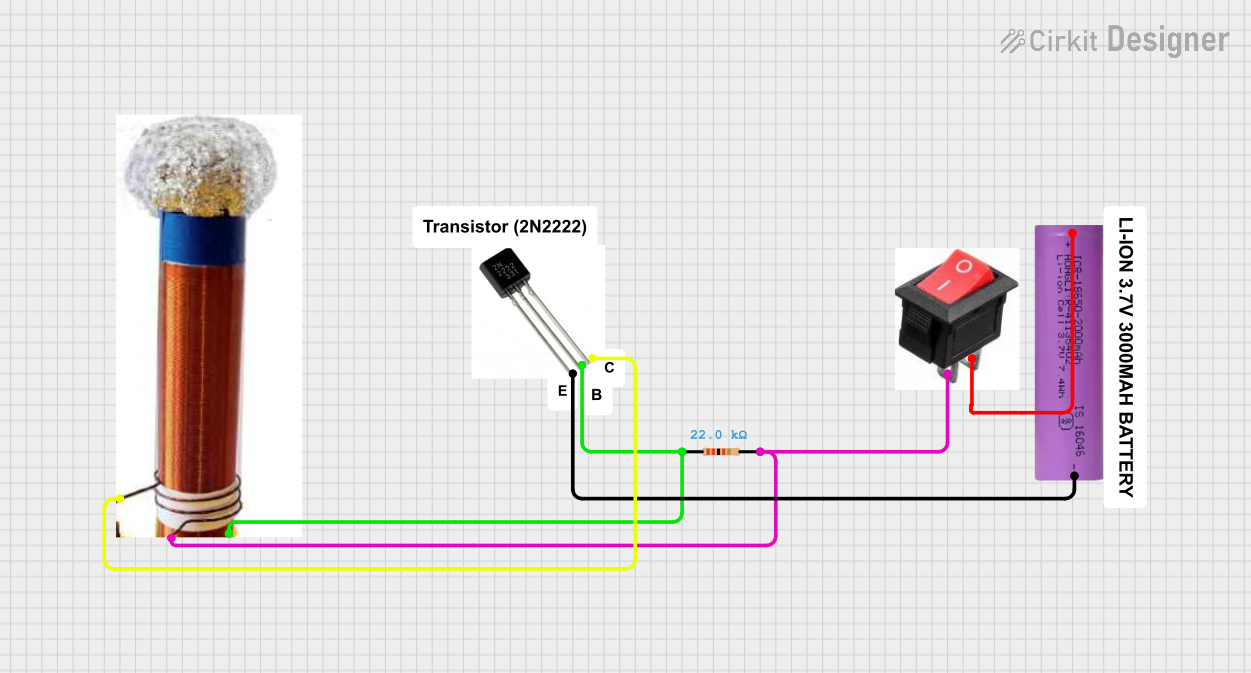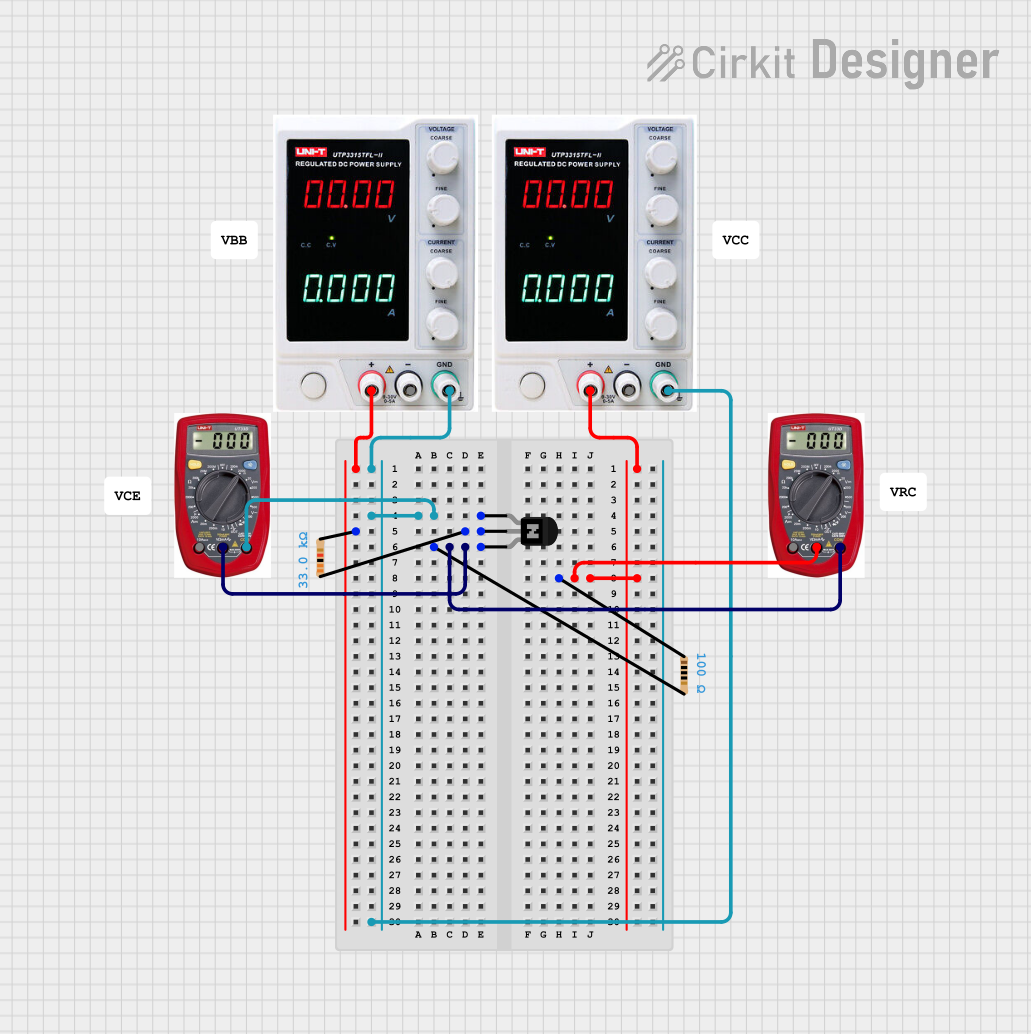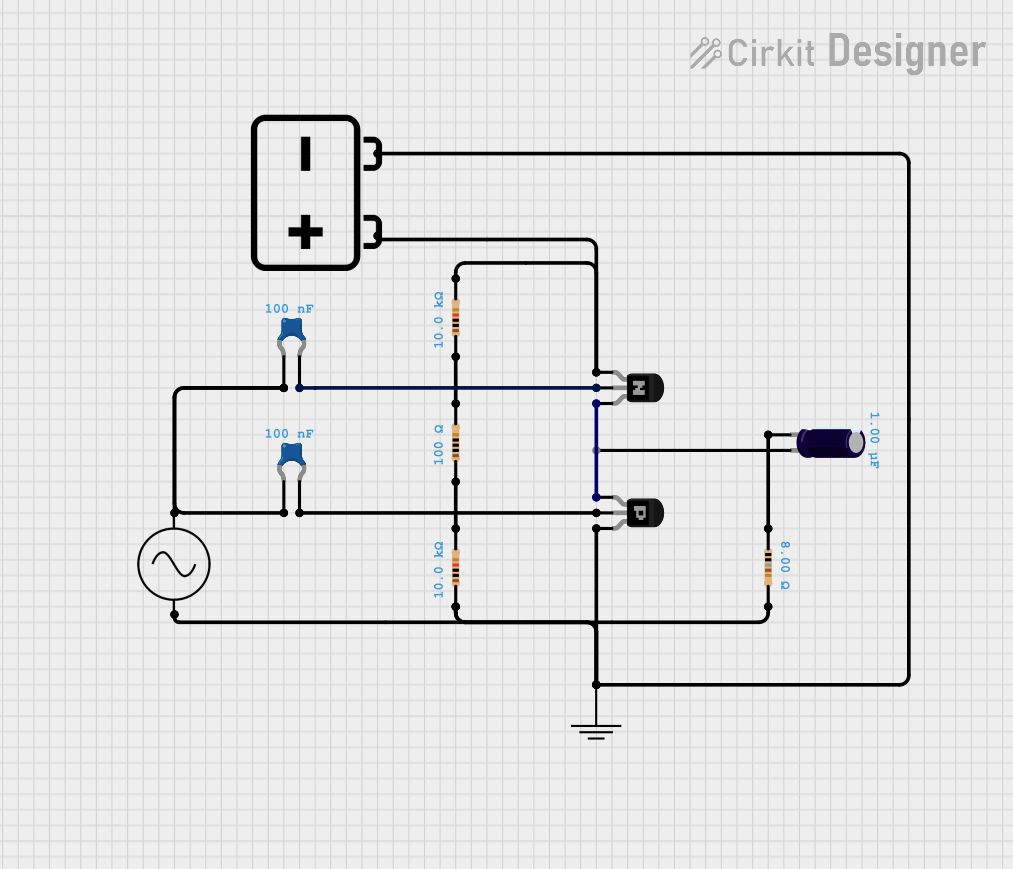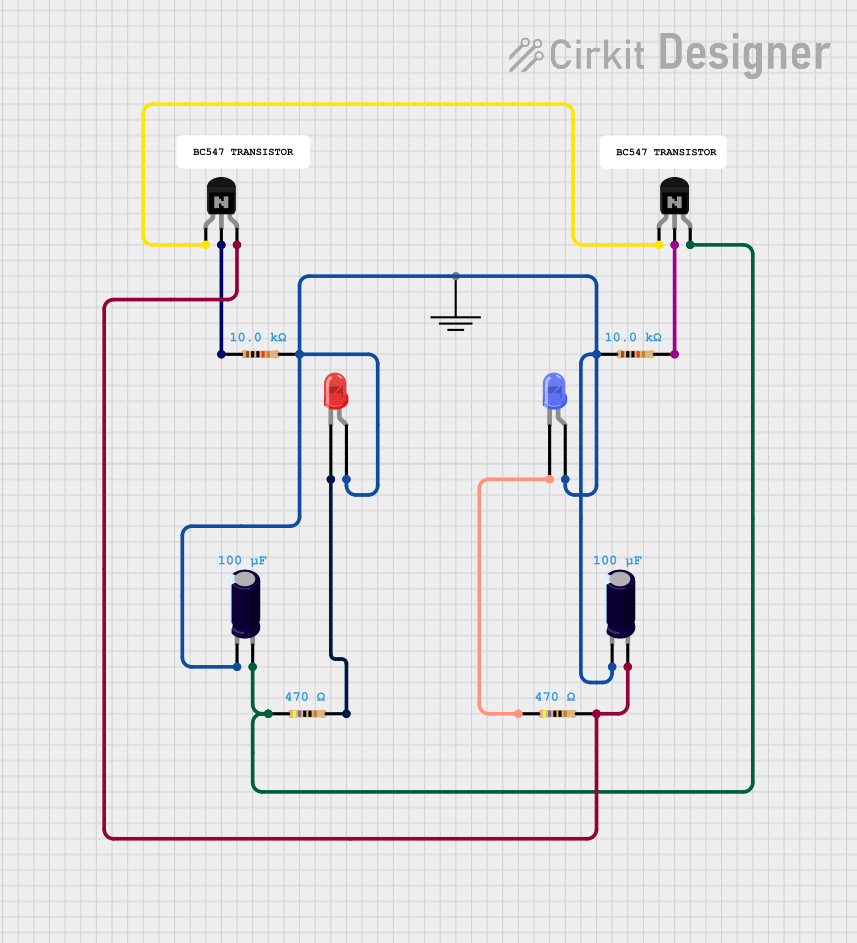
How to Use transistor (2N222): Examples, Pinouts, and Specs

 Design with transistor (2N222) in Cirkit Designer
Design with transistor (2N222) in Cirkit DesignerIntroduction
The 2N222 is a general-purpose NPN bipolar junction transistor (BJT) widely used in electronic circuits for amplification and switching applications. Known for its versatility, high speed, and ability to handle moderate power levels, the 2N222 is a popular choice among hobbyists and professionals alike. Its robust design and reliable performance make it suitable for a wide range of applications, including signal amplification, motor control, and digital switching.
Explore Projects Built with transistor (2N222)

 Open Project in Cirkit Designer
Open Project in Cirkit Designer
 Open Project in Cirkit Designer
Open Project in Cirkit Designer
 Open Project in Cirkit Designer
Open Project in Cirkit Designer
 Open Project in Cirkit Designer
Open Project in Cirkit DesignerExplore Projects Built with transistor (2N222)

 Open Project in Cirkit Designer
Open Project in Cirkit Designer
 Open Project in Cirkit Designer
Open Project in Cirkit Designer
 Open Project in Cirkit Designer
Open Project in Cirkit Designer
 Open Project in Cirkit Designer
Open Project in Cirkit DesignerCommon Applications and Use Cases
- Signal amplification in audio and RF circuits
- Switching small loads such as LEDs, relays, and motors
- Pulse-width modulation (PWM) control
- General-purpose low-power applications in embedded systems
- Logic level shifting in digital circuits
Technical Specifications
The 2N222 transistor has the following key technical specifications:
| Parameter | Value |
|---|---|
| Transistor Type | NPN |
| Maximum Collector-Emitter Voltage (VCEO) | 40V |
| Maximum Collector-Base Voltage (VCBO) | 75V |
| Maximum Emitter-Base Voltage (VEBO) | 6V |
| Maximum Collector Current (IC) | 800mA |
| Maximum Power Dissipation (PD) | 500mW |
| DC Current Gain (hFE) | 100 to 300 |
| Transition Frequency (fT) | 250 MHz |
| Package Type | TO-92, TO-18 |
| Operating Temperature | -55°C to +150°C |
Pin Configuration
The 2N222 transistor typically comes in a TO-92 package. The pinout is as follows:
| Pin Number | Pin Name | Description |
|---|---|---|
| 1 | Emitter | Current flows out of this terminal |
| 2 | Base | Controls the transistor's operation |
| 3 | Collector | Current flows into this terminal |
Below is a diagram of the TO-92 package for reference:
_______
| |
| |
|_______|
| | |
1 2 3
E B C
Usage Instructions
How to Use the 2N222 in a Circuit
Determine the Configuration: The 2N222 can be used in three configurations:
- Common Emitter: For amplification and switching.
- Common Base: For high-frequency applications.
- Common Collector: For impedance matching.
Biasing the Transistor: Apply a small current to the base (B) to control a larger current between the collector (C) and emitter (E). Use a resistor in series with the base to limit the base current and prevent damage.
Switching Applications:
- Connect the load (e.g., LED, motor) to the collector.
- Use a base resistor to control the transistor's ON/OFF state.
- Apply a HIGH signal to the base to turn the transistor ON, allowing current to flow through the load.
Amplification Applications:
- Use the transistor in a common-emitter configuration.
- Apply the input signal to the base and take the amplified output from the collector.
Important Considerations and Best Practices
- Base Resistor: Always use a resistor in series with the base to limit the base current. A typical value is 1kΩ, but it depends on the input signal and desired collector current.
- Heat Dissipation: Ensure the transistor does not exceed its maximum power dissipation (500mW). Use a heatsink if necessary.
- Voltage Ratings: Do not exceed the maximum voltage ratings (e.g., VCEO, VCBO, VEBO) to avoid damage.
- Current Ratings: Ensure the collector current (IC) does not exceed 800mA.
Example: Controlling an LED with Arduino UNO
Below is an example of using the 2N222 transistor to control an LED with an Arduino UNO:
// Define pin connections
const int ledPin = 9; // Arduino pin connected to the base of the 2N222
const int baseResistor = 1000; // Base resistor value in ohms
void setup() {
pinMode(ledPin, OUTPUT); // Set the pin as an output
}
void loop() {
digitalWrite(ledPin, HIGH); // Turn the LED ON
delay(1000); // Wait for 1 second
digitalWrite(ledPin, LOW); // Turn the LED OFF
delay(1000); // Wait for 1 second
}
Circuit Connections:
- Connect the emitter (E) to GND.
- Connect the collector (C) to one terminal of the LED. The other terminal of the LED connects to a current-limiting resistor, which is then connected to +5V.
- Connect the base (B) to the Arduino pin (e.g., pin 9) through a 1kΩ resistor.
Troubleshooting and FAQs
Common Issues and Solutions
Transistor Not Switching Properly:
- Cause: Insufficient base current.
- Solution: Reduce the base resistor value to increase the base current.
Overheating:
- Cause: Exceeding the maximum power dissipation.
- Solution: Use a heatsink or reduce the load current.
No Output Signal:
- Cause: Incorrect pin connections.
- Solution: Double-check the pinout and ensure proper connections.
LED Not Turning ON:
- Cause: Incorrect base resistor value or insufficient base voltage.
- Solution: Verify the base resistor value and ensure the base voltage is sufficient to turn the transistor ON.
FAQs
Q1: Can the 2N222 be used for high-power applications?
A1: No, the 2N222 is designed for moderate power levels with a maximum collector current of 800mA and power dissipation of 500mW. For high-power applications, consider using power transistors like the TIP120.
Q2: What is the maximum frequency the 2N222 can handle?
A2: The 2N222 has a transition frequency (fT) of 250 MHz, making it suitable for high-speed switching and RF applications.
Q3: Can I use the 2N222 without a base resistor?
A3: No, using the 2N222 without a base resistor can result in excessive base current, potentially damaging the transistor.
Q4: Is the 2N222 suitable for analog signal amplification?
A4: Yes, the 2N222 is commonly used for analog signal amplification in audio and RF circuits.
By following this documentation, you can effectively use the 2N222 transistor in your electronic projects!